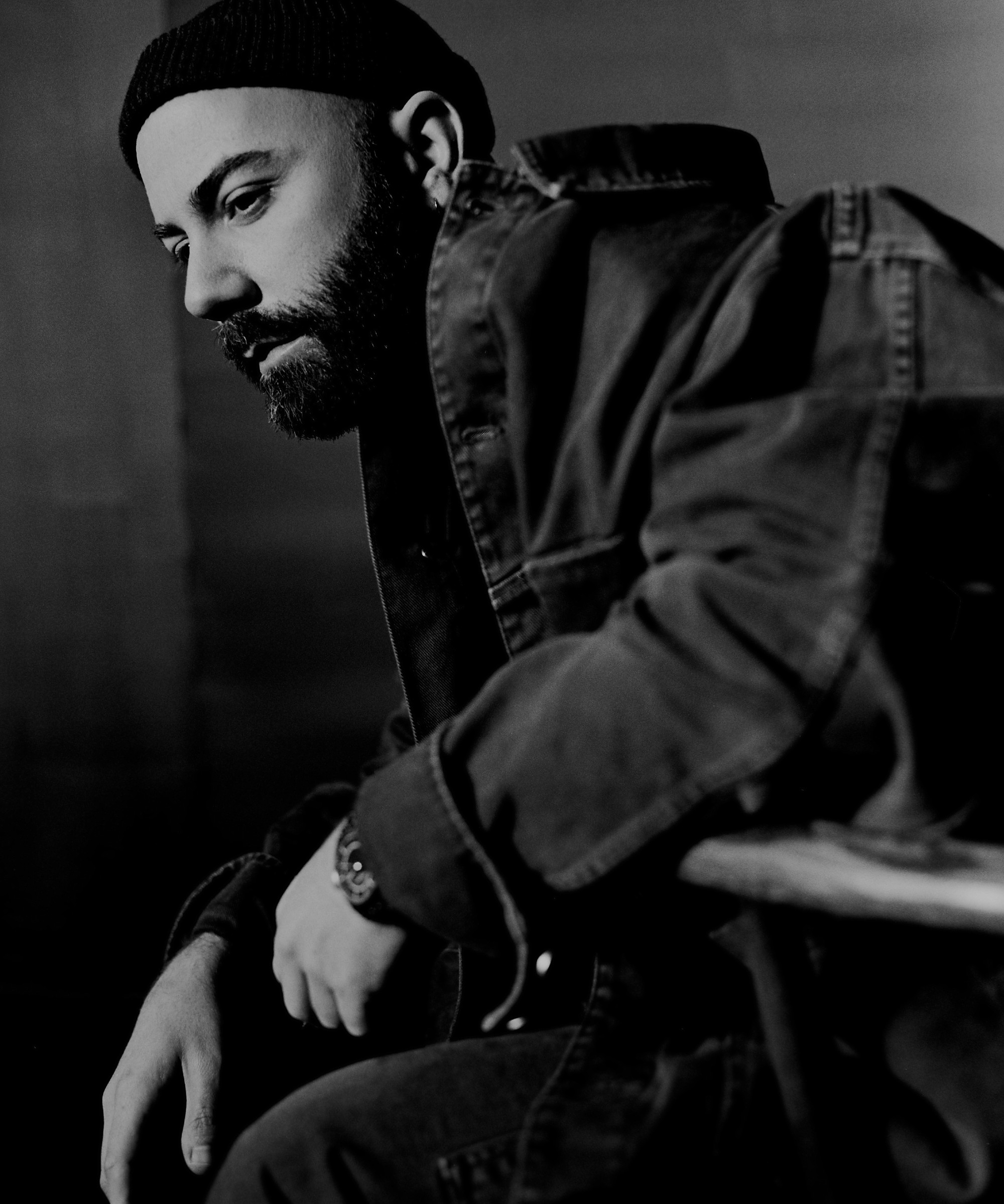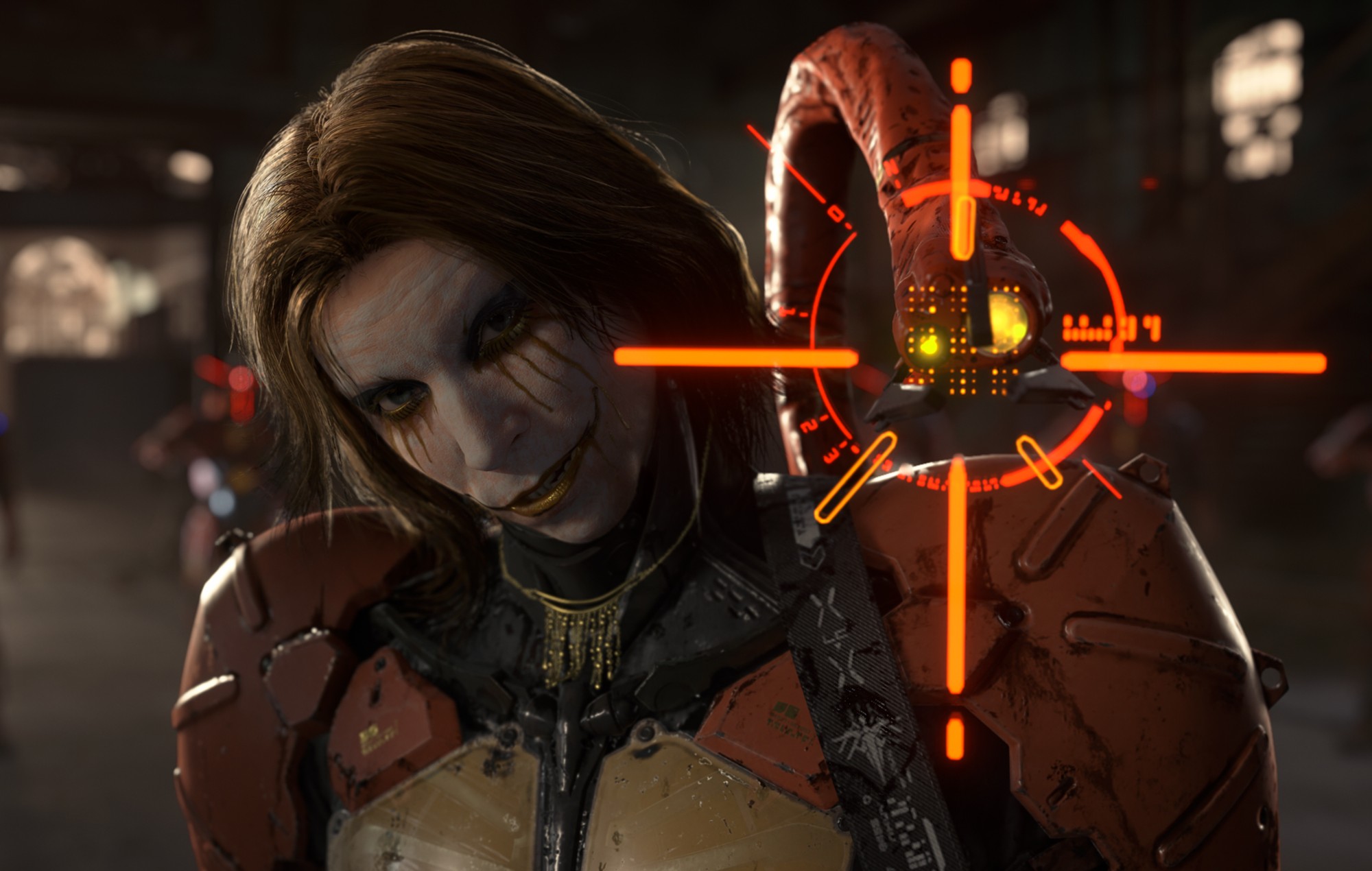How Woodkid’s bizarre pop made the world of ‘Death Stranding 2’ even stranger


“Hideo Kojima doesn’t make middle of the road decisions”, says Yoann Lemoine. The French musician known as Woodkid would know, he’s spent the past three years working alongside the auteur gamemaker on Death Stranding 2: On The Beach. The strange, sprawling sequel expands on the hit 2019 original, while still offering plenty of odd surprises.
“Hideo kept telling me: ‘I want to create more moments where people throw away the controller,” Woodkid continues. “He really doesn’t give a shit what people say about him; he genuinely just wants to inspire a reaction.”
The first game certainly did that. Players were introduced to a post-apocalyptic world that was still reeling from the devastating Death Stranding event which blurred the lines between life and death. It was the perfect backdrop for a dystopian sci-fi adventure that saw cynical courier Sam Porter Bridges trying to reconnect isolated colonies. From there, the critically acclaimed title went to some truly bonkers places. Kojima explored big themes of faith, isolation and community while players bounced between slow-burning exploration, mind-boggling drama and occasional bursts of violence and horror.
Death Stranding 2 picks things up 11 months later. We won’t spoil exactly what happens, but On The Beach is a deliberate evolution rather than more of the same. “It’s still so different from any other game out there though,” says Woodkid. It meant his soundtrack for Death Stranding 2 couldn’t be middle of the road either.
Across the 16-track album that’s available to stream, plus the hours of music that works in-game alongside Ludvig Forssell’s orchestral score, Woodkid’s music takes inspiration from drum ‘n’ bass, industrial metal and wonky pop. There are appearances from old friend Bryce Dessner of The National and Hollywood legend Elle Fanning. “I had to trust the process and not question my own presence in the game. From the very beginning, I felt very free to do whatever I wanted, ” Woodkid says before cracking a smile. “When you’re working around geniuses like Hideo, it’s very easy to be good.”
Death Stranding 2: On The Beach launched last month and quickly became one of best-reviewed games of the year. Below, Woodkid tells us how his weirdo pop soundtrack helped shape the bizarro world Hideo Kojima created.
Woodkid was originally going to make just one song
On The Beach isn’t the first time Woodkid’s music has appeared in a Hideo Kojima game. ‘Goliath’, a track from his 2020 solo album ‘S16’, was used in the Director’s Cut re-release of Death Stranding, and he’s also contributed to Netflix’s critically acclaimed League Of Legends series Arcane.
Kojima was a fan and initially approached Woodkid about writing a lead single for the Death Stranding sequel. They spoke about the loose themes of wilderness and escapism, and a little while later, Woodkid submitted a track called ‘To The Wilder’. He wanted to give the famously specific game designer a few different options, though, so he sent over a handful of other ideas alongside it. Kojima wanted to use them all. This back and forth happened a few more times until Woodkid had set up a studio in Japan to work on an entire score.
Kojima’s concerns about being “too mainstream” were a big life lesson
Halfway through development, Kojima came to Woodkid with a problem. According to Kojima, early reactions to the game were too positive and he was worried it wasn’t “polarising” enough. He made some big changes to the story, but Woodkid didn’t have to alter his score. “Kojima was already pushing me to do stuff that was very bizarre,” he explains.
What it did do was reaffirm Woodkid’s approach to music. “I have no idea if I’m a mainstream musician, or if I’m indie,” he says. “The only thing I know is that people who like my music, like it very much. I think that’s what Hideo was getting at. He doesn’t want everyone to love his work, but he wants it to really resonate with the people who do love it.”
It meant the pair could create without compromise. “Death Stranding is both a super odd indie game and a massive AAA blockbuster,” he continues. “What matters to Hideo isn’t living up to the expectations of the first game, but making something that will move people. He wants people to wake up one morning after playing, go to their computer, download Unreal Engine and start to make their own game.”

Woodkid’s music is inspired by rebels
Woodkid looked to artists who have “never followed the easy path”, such as Radiohead’s Thom Yorke, Nine Inch Nails’ Trent Reznor, Depeche Mode’s Dave Gahan and James Blake. “They’re the angels on my shoulder, although sometimes they feel like devils,” he says. “If I make a song that sounds similar to something else, I move away from it. That is hopefully why my music is really hard to put in a box.”
Woodkid felt no pressure to write a hit single for the Death Stranding 2 score, but the industrial rave of ‘Black Drift’ has emerged as an early fan favourite. “I knew there was a side of the game that was about grotesque political violence, so I wanted to make something that sounded furious but also very pop,” he says of the track. “I also love the Wipeout soundtrack, so I wanted to bring in that drum ‘n’ bass energy. There’s something about that one that feels very English.”
The Death Stranding 2 soundtrack never ends
The music of Death Stranding 2 sounds very different in the actual game, thanks to some very clever tech. A lot of video games use procedural music that reacts to what the player is doing, but typically, it’s nothing more than fading between tracks as you move from one area to another.
Woodkid wanted to go “way beyond that” for Death Stranding 2. He fed each element of each track into a procedural generator and taught it to rebuild the songs based on harmonic theory. “This creates an infinite number of possibilities for each song, depending on what the player is doing and how fast they’re doing it,” he explains. “Every time you play the game, you’ll hear something new.”
He also worked with a full orchestra to avoid the “cheap-ass” sounds you get from samplers, and wanted to find a balance between the “stark, scientific” approach to procedural music and the feelings it’s meant to amplify in the game. “Most people will not notice the procedural aspect of the music in the game, and I’m fine with that,” he says. “A good video game soundtrack is music that disappears a little bit.”

The whole thing is about digging a little deeper
Kojima and Woodkid worked closely on the music of Death Stranding 2, with the soundtrack evolving alongside the game development. At the start, it was going to be a collection of vocal-heavy pop songs, but it ended up “more industrial, contemporary and bizarre”.
“Hideo Kojima was really affected by the pandemic and he realised that connection from a distance doesn’t really mean much,” Woodkid says of the overarching themes. “I think Death Stranding 2 is about the limitations of virtual connection and the importance of connecting in real life. There’s also something about grief in the game that feels very prominent and important.”
As for why Kojima’s games inspire such a deep reaction, Woodkid believes it’s because “he’s not afraid of darkness” in all its forms. “Some of the scenes in Death Stranding 2 are shocking – either shockingly bizarre, shockingly different or shockingly amazing. That’s what people connect to,” he adds. “They want something that transports them somewhere else, and they want something that they’re not expecting.”
‘Death Stranding 2: On the Beach’ is available now for PlayStation 5 and Woodkid’s soundtrack is available to stream here
The post How Woodkid’s bizarre pop made the world of ‘Death Stranding 2’ even stranger appeared first on NME.




